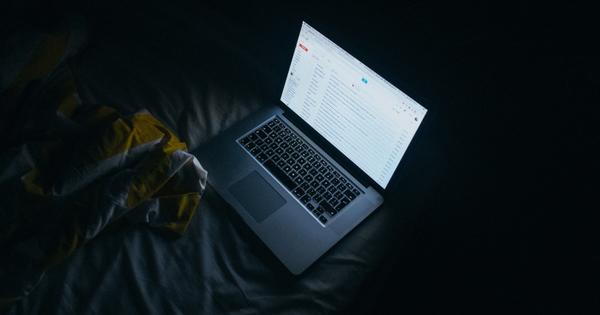When you press the start button on your computer, you naturally want to see the desktop on your screen as soon as possible. An SSD as a boot disk can work wonders, but there are also some software tricks to enable faster booting.
Tip 01: Measuring boat time
In this article, we'll give you tips and tools to reduce Windows startup time. Now you can of course use a stopwatch to record the differences, that works quite reliably. But then you only know the total boot time. It can also be done differently: using the free BootRacer tool. This tool divides the startup process into four sequential stages: preboot, Windows Boot, Password Timeout and desktop. The Preboot phase mainly takes place at the bios level and can therefore not be measured by Bootracer (see also tip 7). With the Password Timeoutphase, the tool deliberately does not take into account: that is the time that Windows waits for entering your password (see also tip 5). The other two phases are included in Bootracer when calculating the start-up time. Those are Windows Boot: the system initialization which mainly consists of loading drivers and starting services, and desktop: Prepare the desktop and run programs that start automatically. By default, BootRacer runs this test each time Windows starts, which you can disable via Advanced / Options / only once. Via the button History BootRacer shows you the start times of the successive restarts: useful for counting out your time gain.

Tip 02: Smart shutdown
It may seem strange, but one of the actions that has the most impact on boot time is the way you shut down Windows. Normally in Windows 10 the function should be Quick Boot to be enabled. This feature combines elements of normal shutdown and hibernation. In such a way that Windows no longer has to load the kernel, drivers and system status one by one when you reboot, as they are neatly stored in a special file when you shut down. In exceptional cases, this feature can cause problems: certain updates won't install, a dual boot setup doesn't work properly or your PC can no longer reach the bios correctly.
As long as you don't experience any of these drawbacks, you're definitely doing the job well Quick Boot to turn on. This can be done as follows: press Windows key + S, tap energy in, choose Selecting a power plan and click on the left in the image Determining the behavior of the power buttons. When necessary, click Change settings that are currently not available and make sure there is a check next to it Enable fast startup (recommended). Keep in mind that this only increases the boot speed after you've effectively shut down Windows, and not with a 'warm' reboot.
 The way you shut down Windows has a big impact on your PC's boot time
The way you shut down Windows has a big impact on your PC's boot time Tip 03: Autostart Timing
Another intervention that can have a noticeable impact on the startup time is the optimization of the so-called 'autostarts': programs that start automatically with Windows. You can get a quick overview of this in Windows 10 via Ctrl+Shift+Esc, which takes you to the Task Manager. Click if necessary More detailsat and then open the tab Startup. In the column Impact on startup you already get an idea of the impact of each item on the boot time (Few, Normal or A lot of).
There are tools that can calculate the respective share of these autostarters even more accurately, such as the aforementioned BootRacer. To do this, in BootRacer, click Advanced / Options and open the tab at the bottom Startup Control. click on Enable Control and make sure there is a check mark Measure programs startup time and with Log history of started apps. Confirm with Save. When you now the History of subsequent boot times, right-click one of the entries and Startup Programs Run History select, you will read the exact loading times of each automatically starting program.

Logs
Advanced users may be familiar with the Windows Logs feature. It tracks the tiniest details of what's happening on your system… including boot performance. Press Windows Key+R and enter eventvwr.msc from. Open here consecutively Logs Applicationsand Services / Microsoft / Windows / Diagnostics-Performance / Operational. The information is a bit overwhelming, but you can zoom in quickly: click in the right panel on Filter current log and enter the following data: Diagnostics-Performance (Bee Event Sources) and 100-199 (Bee Event IDs). You will now see all kinds of feedback about the boat performance: click an item on more for detailed information. With a bit of luck you will find out which items cause extra delay in the startup process.

Tip 04: Autostart Optimization
BootRacer also includes a tool to disable unwanted autostarters (permanently or not) and to change the boot order between them. In the main window, click Startup Control. To temporarily disable such a blackhead, remove the check mark next to the item. You can also delete it permanently with the button delete, but of course you only do that if you are sure of your case.
Optionally, you can also adjust the boot order of the items. Press the button Set Order, after which you use the arrows to the left and right of the items to set the desired order. Confirm with the button Finish Reorder.
In addition to BootRacer, there is another, more powerful boot manager, aimed at the more advanced user: HiBit StartUp Manager. Download the program, choosing the installable version; in the portable version some options are missing. This tool also gives you a list of all car starters, but from the context menu it is possible via the option Add to Delay decide for yourself whether you want to deliberately postpone loading the car starter and, if so, by how much time. This way you get to see the desktop a little faster, since the delayed program is only started afterwards. Via the option Automatic Delay it is even possible to set preconditions for the postponement, such as 80% or CPU must be Idle or 60% or Disk must be Idle.
 The powerful startup manager HiBit StartUp Manager targets the advanced user
The powerful startup manager HiBit StartUp Manager targets the advanced user crapware
If you have purchased a new PC or laptop, it may already be equipped with Windows. Handy, but unfortunately many manufacturers use this to install all kinds of extra software. These are often stripped-down freemium applications. They can also slow down the boot time and operation of your system. A good helper to get rid of that clutter quickly is The PC Decrapifier. All it takes is the button analysis , select the offending apps (perhaps especially those on the Recommended) and confirm with Remove Selected.

Tip 05: Service Optimization
Windows not only loads the auto-launching programs in the background, there are also a lot of services that run automatically. You may not gain as much boot time by disabling redundant services, but it may make your system run faster or more stable. You get an overview of these services from the task management (Ctrl+Shift+Esc) on the tab Services. You will also find the link here Open Services on, which you use in the module Windows Services ends up. Permanently stopping a service is not that difficult from here: right click on the service, choose Characteristics and set it Startup type in on Turned off.
However, the question is: how do you know which services are redundant? Read: not necessary for (the proper functioning of) your system or certain applications? This is where Google can be your friend, but there are also decent sites that can help you with your choices, including this one (for Windows 10). Scroll down to see the list of Windows services that come standard with Windows. Note: there are different pages available, click on Next at the bottom to browse it. In the column Safe for Laptop and Safe for Desktop you can always read which service you can normally safely disable (Disabled). In case of the slightest doubt, it is better to leave the current status undisturbed.

Tip 06: Auto-restart
If you're the only user of your computer, you don't necessarily have to log in to Windows with a password every time - if you don't see any security problems with that, of course. You can set Windows to start automatically with a specific user account. This will save you some time. Press Windows Key+R and enter netplwiz from. Select your own account in the window User Accounts and uncheck Users must provide a username and password to use this computer. Confirm with OK and enter the corresponding password twice. Press . again OK: from now on Windows will start properly with your account.

dual boot
Have you installed more than one physical operating system on your PC, requiring you to reboot the computer to boot from the other OS? Then you can save some time with the following tips. By default, such a dual boot setup installs a boot menu that asks which OS you want to boot from, with a timeout of 30 seconds. That could be a bit shorter, right? As an administrator, go to the command prompt and run the following command: bcdedit /timeout x (at which X the desired timeout is in seconds, after which the default OS will boot).
Another handy tool is iReboot, which is free for non-commercial use. After installation, click on the corresponding icon in the Windows system tray and place a check next to Reboot on Selection. From now on you only have to indicate in this shortcut menu with which OS you want to restart the PC. You will see: this is noticeably faster than in the normal way.

Tip 07: Cinema
In tip 1 we already talked about your computer's bios (basic input output system) for a while and we stated that BootRacer cannot calculate the time it takes for the bios to prepare things. That's because Windows (along with all applications within this OS) doesn't become active until after the BIOS boot phase has been completed. During this phase, the devices present are identified and initialized, among other things, and a POST (power-on self-test) test is also performed. If it detects a valid system disk, the corresponding boot record is read, after which the torch is finally passed to the installed OS.
There is not much you can do to speed up this phase. It is important that you provide all hardware components with the latest firmware. It is also a good idea to check the bios settings. Exactly how you get to the setup window of your uefi/bios depends on your system: consult the manual for your system, often this is an F-key or Escape.
Exactly which options are available in your uefi/bios depends on the manufacturer and the bios version. Tips to take with you are already: activate an option if Quick Boot or Quick Power on Self Test (if available) so that the POST test is handled a little faster. Furthermore, you should preferably set the boot order so that it tries to boot from your hard disk first, so that the bios does not have to search for a suitable boot medium. It is best to disable unused hardware components in your bios as far as possible.

Tip 08: Measure again
All these tips allow for small optimizations, but together they can provide quite a bit of acceleration. And even if it's just a few seconds, count how many times a year you sit and wait for your desktop to appear, and you'll realize that every second is a win.
Did you follow all the tips? Then measure the boot time of your system again! This can be done with the stopwatch or with a tool like BootRacer. How much faster has your computer become in booting?

